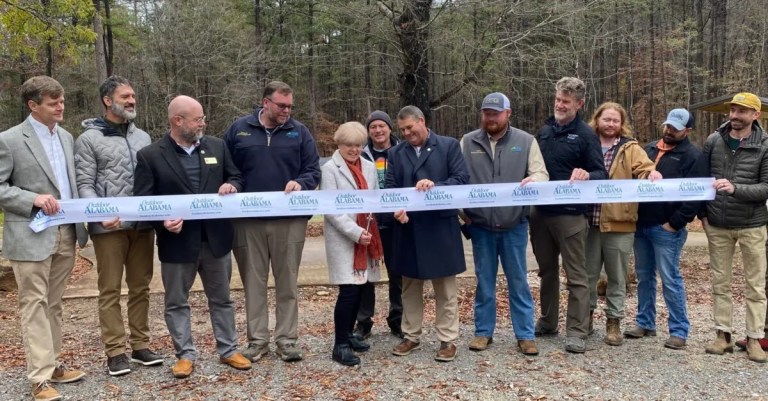North Alabama bear population has doubled in four years
Reading time: 4 minutes

Here is some good news from Auburn University about Alabama’s growing bear population.
According to a study by Auburn University the black bear population in Alabama shows a growing number of bears in northeast Alabama and a distinct genetic group in southwest Alabama.
The Numbers
The state has two areas with bear populations: one with an estimated 30 bears centered around Little River Canyon near Fort Payne and another with an estimated 85 bears in Mobile and Washington counties north of Mobile. The latter number could be as high as 165.
The north Alabama black bear population, which originally migrated from north Georgia, has more than doubled in the past four years.
Professor Todd Steury of the School of Forestry and Wildlife Sciences and graduate students Christopher Seals and John Draper conducted the multiyear study and recently published the results in the Nov. 8 edition of the scientific journal, PLOS One. Their article, “Genetic health and population monitoring of two small black bear populations in Alabama, with a regional perspective of genetic diversity and exchange,” is online.
The researchers collected DNA samples from hair left on more than 300 hair snares placed in bear habitats; finding and collecting bear scat using Auburn’s EcoDogs program; using game cameras; and tracking bears with radio collars.
“We got over 1,000 DNA samples,” Steury said. “Several groups around the state helped us collect data.”
Support from the Birmingham Zoo
Locally, the Birmingham Zoo helped with the capture of bears in North Alabama, while students at Munford High School helped gather information in Talladega National Forest and the National Park Service assisted in Little River Canyon National Preserve. The study was funded primarily by the State Wildlife Grants program from the Alabama Department of Conservation and Natural Resources, which also helped with fieldwork.

Aside from the North Alabama bears, the bears residing north of Mobile seem to be their own distinct group without any genetic connection to other bear populations. “We found high inbreeding in those bears,” Steury said. “They have the lowest genetic diversity of any comparison population in Southeast.”
Previous studies conducted in lab settings have shown low genetic diversity can lead to lower survival rates and lower reproduction rates, according to Draper. However, he says those lab results are very difficult to prove in a wild population.
“We look at low genetic diversity as a proxy of likely harmful changes at the genetic level,” Draper said. “Long-term studies are needed to determine the effect on the population.”
Steury says the Mobile bear population’s growth rate is unknown at this time and that the population is continuous with bears in eastern Mississippi.
Information about Black Bears in Alabama
While technically a game species, there is no hunting season for bears in Alabama because the population numbers are too low. It is illegal to kill a bear in the state.
“If you encounter a black bear, you should stay calm, make yourself big and loud, and back away slowly,” Steury said. “A black bear will almost always run away, but, if you are attacked, you should fight back. That differs from a grizzly bear, which, in that case, you should play dead if attacked.”
He also recommends steps to discourage bears from roaming into populated areas, such as not feeding bears and not leaving trash and pet food outside. If a person sees a bear, he or she should contact a local conservation officer or the Alabama Department of Conservation and Natural Resources.
* Many thanks to Auburn University for the photos and press release

 12560 views
12560 views

